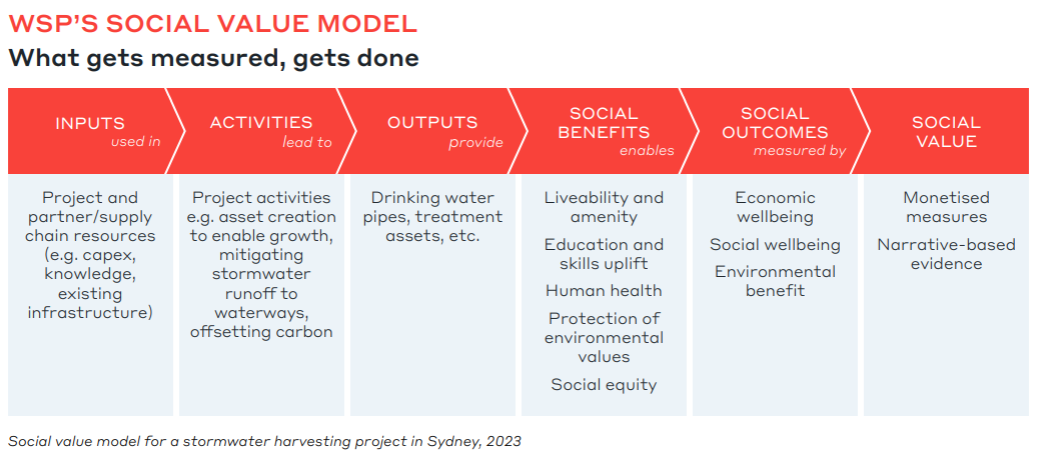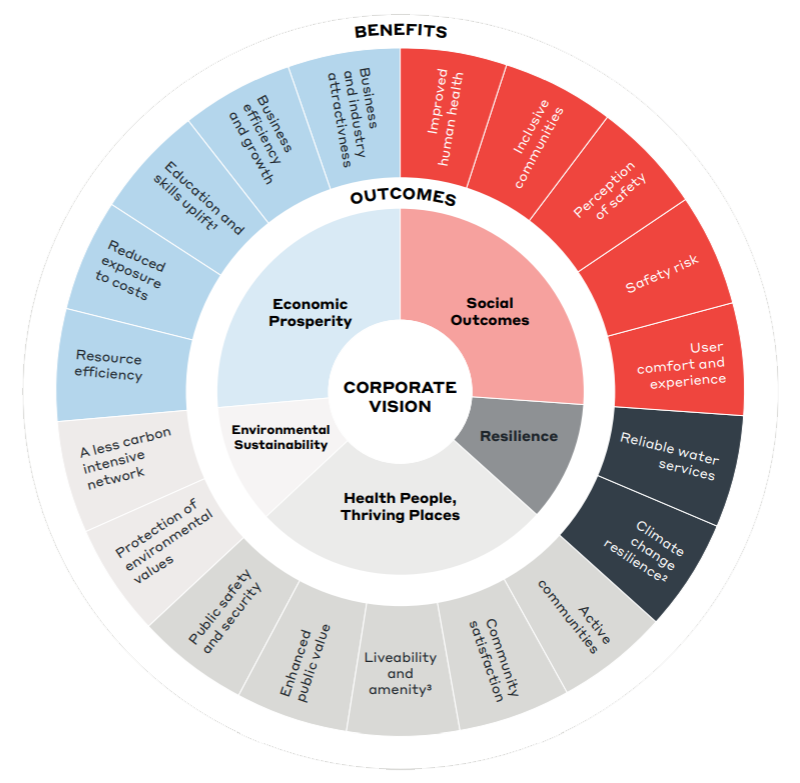Valuing What Matters: Quantifying the Social Value of Water

WSP's latest paper 'Valuing What Matters: Quantifying the Social Value of Water' discusses the concept of social value and the approach to valuing what matters to people and communities.
Infrastructure projects deliver valuable outcomes for cities and communities. Social value for a community of infrastructure users (as well as non-users) requires long-term community engagement and participation. Failure to capture and measure what the community values as a social benefit, may result in value creation and value stacking opportunities being missed or lost. The water sector has always delivered social outcomes; the time has come to demonstrate value to our regulators, policy makers and communities.
Social value is both a concept and an approach to valuing what matters to people and communities. At WSP, social value is considered to be the cumulative value of benefits created by an organisation through its projects and activities, in terms of the relative importance that people place on the change they experience. This includes social wellbeing, social capital and environment impacts.
Why is social value important for the water sector?
Social value is important to the water sector, now more than ever. First, it’s better for our communities and customers. Water management in our urban and regional built environments enables Australians to live better lives and delivers substantial direct and indirect benefits to the nation’s economy. Prioritising and valuing social outcomes through the design and delivery of water infrastructure is crucial for achieving a sustainable
and socially responsible future.
Secondly, we're seeing governments actively embed social value into their decision-making processes and funding requirements. The last 10 years has seen a growing number of governments around the world commit to social value targets and introduce frameworks to measure social value, including in France, Italy, Scotland, the United Kingdom, New Zealand and Ecuador.
The Australian Government recently released Measuring What Matters, a national wellbeing framework to track social as well as economic outcomes. This is a clear signal that social value will likely be mandated by state and federal governments in the coming years.
The water sector has been delivering social outcomes for decades. We now have an opportunity to lead industry in acknowledging how to measure and report on monetised and non-monetised social value delivered by water projects.
"When it is planned, embedded, measured and reported on effectively, accounting for social benefits can help projects build social licence with the communities in which they operate," says Shalini Gonsalves, Principal – Strategic Advisory at WSP.
Social value can often be viewed as a soft or discretionary concept rather than a measurable and concrete way to evidence the existing and future social outcomes delivered by water project investments, enjoyed by direct and indirect beneficiaries. Assigning value to specific beneficiaries can sometimes help unlock co-funding opportunities, further supporting business cases that contribute to societal value.
While it is important to capture social value through the stories of those who benefit, many social value outcomes can now be quantified and monetised – and WSP is leading the way in Australia and overseas with a methodology that understands the unique context of the water sector and Australian communities - adapting and localising without resorting to ‘off the shelf’ metrics that are not fit-for-project.

Organisations don’t determine social value. Communities do.
Social value should ideally be considered early in the project planning phase, and always before delivery has commenced. This provides opportunities for project leaders and designers to consider place-based social outcomes designed to meet the specific community’s needs and aligned with the aspirations of the organisation.
However, it is also possible to consider social benefit in design and pre-delivery approval phases of projects. What’s important is the ongoing discussion with community beneficiaries, and monitoring, tracking and reporting on agreed social value targets.
Social value starts with a vision – and this must be determined through partnerships with communities that go beyond consultation or engagement, so we are guided by the beneficiaries on what’s important to be measured.
For example, WSP recommended starting with building a shared understanding of the local First Nations communities’ connection to water and land in the area, and to be guided by these conversations when identifying social value targets and metrics. WSP also illustrated how collaborating on traditional water management practices could offer opportunities for shared value, whereby Indigenous design principles guide stormwater harvesting and hydration approaches, and community members gain meaningful connections to Country by contributing to the project design and delivery.
Social Benefit
It is important that all projects within an organisation are consistent in their identification and measurement of social value. A robust benefits framework starts with organisational vision for the environmental and social change it seeks to deliver through its projects. From vision flows social outcomes, followed by a menu of linked benefits.
By following the same benefits framework, projects within an organisation can determine how they contribute to
building social licence.

Final Thoughts
At its heart, social value is about enabling long term benefits and legacy from projects. Social value can be considered across all stages of a project, but starting at the planning phase and embedding, tracking, monitoring and reporting on quantitative and qualitative measures for social value throughout a project’s entire lifecycle – and beyond! - will result in the best outcomes for communities and business cases.
While there are some great examples of social value in urban water projects, opportunities remain for embedding social value across projects, and the sector as a whole.
This article was republished with permission from WSP - Water Insights in Social Value Paper.


